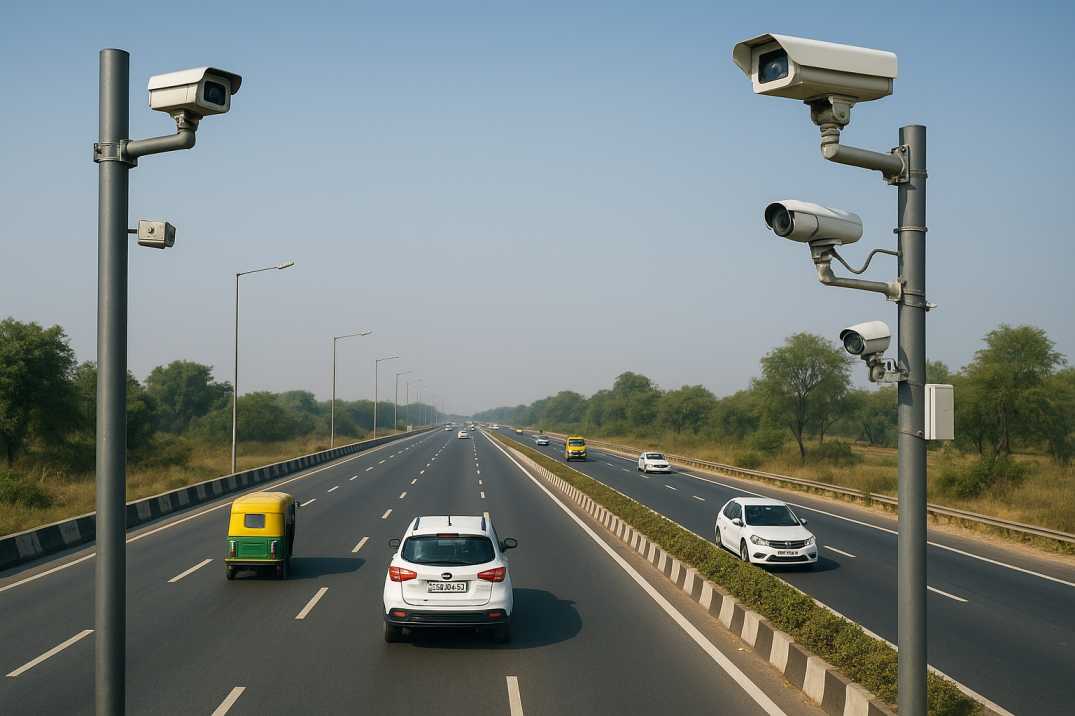Contact Us
RoadVision AI
Private Limited
Office No. 308 & 310, B Block
Ansal Chamber - 1, Bhikaji Cama Place,
Near Engineers India Limited (EIL) Bhawan, New Delhi - 110066
© 2024 | RoadVision AI | All rights reserved
The Indian Roads Congress (IRC), through IRC SP 84 – Manual of Specifications & Standards for Four Laning of Highways through Public Private Partnership (PPP), has set clear standards for geometric design, safety provisions, and compliance requirements on four-lane corridors across India. As highway expansion accelerates, ensuring safety is a priority for both government and concessionaires. Traditionally, road safety audits have been manual and time-consuming, often missing critical risks. The rise of AI-based road safety audits, digital road safety systems, and automated compliance audits is transforming how India ensures compliance with IRC SP 84 road safety standards.
By adopting AI road safety audit India solutions, contractors and authorities can identify risks earlier, reduce accidents, and align road projects with road asset management India best practices.

The IRC SP 84 manual outlines safety as an integral part of four-lane highway projects. It requires:
These requirements aim to provide seamless, safe travel for all road users while reducing fatality risks. However, manual safety audits struggle with consistency, especially across India’s rapidly growing highway network. This gap is now being bridged by AI road survey and digital traffic monitoring systems.
The adoption of AI-based road safety audits is a game changer in achieving compliance with IRC SP 84 road safety mandates. Unlike traditional audits, AI-driven systems use computer vision, LiDAR, drones, and IoT sensors to automate inspections and generate actionable insights.
Benefits of AI in safety audits include:
This technology-driven approach reduces subjectivity, increases accuracy, and allows authorities to scale safety inspections across multiple corridors efficiently.
A digital road safety system integrates multiple technologies into one monitoring framework:
By integrating these tools, road asset management India projects can ensure better safety and compliance outcomes.
Implementing AI-based road safety audit solutions provides measurable outcomes:
These benefits align directly with India’s goals of safer, more reliable transport infrastructure.
IRC SP 84 road safety guidelines provide the framework, but technology makes compliance achievable at scale. With AI-based road safety audits, digital road safety systems, AI road surveys, and automated compliance audits, India is moving towards safer four-lane corridors. These innovations not only improve safety but also strengthen road asset management India strategies, ensuring long-term sustainability of infrastructure investments.
RoadVision AI is transforming infrastructure development and maintenance by harnessing AI in roads to enhance safety and streamline road management. Using advanced roads AI technology, the platform enables early detection of potholes, cracks, and surface defects through precise pavement surveys, ensuring timely maintenance and optimal road conditions. Committed to building smarter, safer, and more sustainable roads, RoadVision AI aligns with IRC Codes, empowering engineers and stakeholders with data-driven insights that cut costs, reduce risks, and enhance the overall transportation experience.
To explore how AI-driven digital safety audits can transform your highway project, book a demo with us.
Q1. What is IRC SP 84 in relation to road safety?
IRC SP 84 is the standard by the Indian Roads Congress for four-lane highways under PPP, covering design, safety, and compliance requirements.
Q2. How do AI-based road safety audits improve compliance?
They automate inspections, identify risks in real time, and ensure projects meet IRC SP 84 safety standards more efficiently than manual audits.
Q3. Can digital traffic monitoring reduce accidents on Indian highways?
Yes, digital monitoring identifies high-risk zones, speeding issues, and congestion, allowing for timely preventive measures.